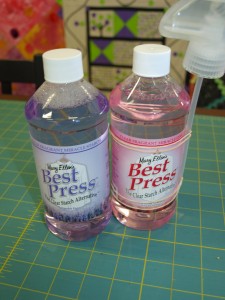I get asked a lot about pre-washing fabrics. And my answer is…. yes and no…
And I do realise that is immensely confusing.
If you pre-wash fabrics (and in this post I’m talking 100% cotton fabrics used in patchwork) you lose the chemicals that the fabrics are treated with that make them look so lovely on a bolt. Those chemicals keep the fabrics from crushing badly as we all know cotton does, it makes the fabrics stay nice so that we are more likely to purchase them. BUT the thing with those chemicals is we don’t want them to remain on our fabrics, nor do we want the chemicals that fabrics are treated with when they enter the country – these chemicals are used to kill any potential nasties that might be hitching a ride across the border/across the seas.
So in that instance you wash everything right?
Well….
I don’t. Mainly because I like the feel of the fabric pre-washed and it certainly makes it easier to cut and piece. But that means that when my quilt is finished I run the risk of shrinkage and dyes leaking everywhere. But in the first instance (shrinkage) I don’t worry too much because cotton only shrinks 3-5% which I find an acceptable loss, other quilters don’t. Also by washing after you have made a quilt you may find the shrinkage makes your quilt look older than it really is – creating that vintage, loved look that older quilts have after many years. I have never had any trouble with excessive shrinkage.
Dyes on the other hand…
Some colours are more notorious than others for running, leaking and generally being a nuisance. In those cases I will wash the fabrics and if the project has other fabrics in it then I will wash the whole lot, so that if they do shrink they’ll all shrink at the same rate.
The colours that run – red, black and navy (and occasionally the variations of those), burgundy, maroon, charcoals and other dark greys, royal blues and denim blues.
Most other colours don’t tend to run or if they do they run so minutely you won’t notice and is not worth the hassle. But those listed above ^^^^ will run at varying degrees, and I find always at the most inconvenient of times (night before quilt given as gift for example). So don’t run the risk with them – plain and simple.
How to fix fabrics that run?
Wash fabrics that you think will run (or that you know will run from pre-testing it) by retarding the dye in the fabric with salt or other commercial dye retarders. Salt is cheaper and everyone has some at home. Wash it as you would normally wash your clothes in the machine, just adding the salt in instead of detergent. I tend to use about half a cup of salt per wash, more if there is more than 2m of fabric.
Wash as normal and check when the machine is spinning the second run of water through that the water is running clear. If it’s not repeat the whole process again. Line dry and then iron as the heat setting will also help with the retarding and stabilising of the dyes.
Another helpful product I’ve come across in my quilting travels is a product you can purchase from the supermarket called Colour Catcher.
Dylon’s Colour Catcher’s are around $6 for a box of 10 sheets. All you do is pop one sheet in with your wash and it collects all of the loose dye floating around in the water so it doesn’t re-enter your fabrics/clothes. This is very, very helpful when washing white fabrics to help stop that greying that happens to white clothes. Yes this product was originally intended for clothes but it works in the same way for fabric.
But now my fabrics don’t feel as nice as when I bought them?
Well there are two ways to deal with this problem –
1. Iron them well and just start cutting to make your quilt. In other words get on with it and just get used to working with softer fabrics.
2. Purchase some of Mary Ellen’s Best Press from me and starch your fabrics so that they are stiffer for you to work with. The starch will wash out and the best part is that your quilt will smell very nice while you are putting it all together.
If you are like me and don’t wash fabrics as often as you should, you can try (no guarantees) what I do and wash a finished quilt with a colour catcher and a cup of salt. I have done it for most of my quilts and have never had fabrics run or too much noticeable (or worrying) shrinkage. HOWEVER – if you try this you do so at your own risk. I am not advising it as a sure fire option, just explaining what I do. I take the risk, but as I have worked with fabric for 13 or so years I have a knack of predicting when a fabric will try some nasty trick on me.
The only thing I find that drives me the most crazy with washing fabrics is the fraying. Now you can try washing in lingerie bags and pillowcases but the truth of the matter is if your fabric wasn’t cut properly at the shops or you’ve underestimated amounts, the fraying can lead you into all sorts of quilting disasters. My advice add extra to your purchase quantities to save grief in the long run. 5cm, 10cm whatever makes you happy and stress free. 🙂
If anyone has any Q&A type questions they would like answered as a blog post please post a comment below or email me frankensteinsfabrics@hotmail.com
Have a terrific stitching week!
Marni x

